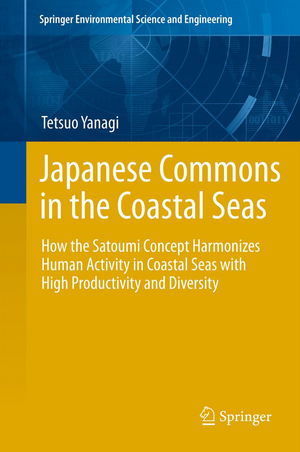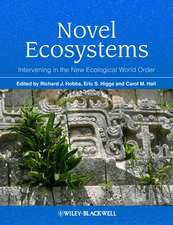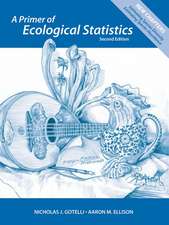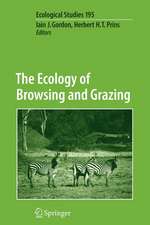Japanese Commons in the Coastal Seas: How the Satoumi Concept Harmonizes Human Activity in Coastal Seas with High Productivity and Diversity
Autor Tetsuo Yanagien Limba Engleză Hardback – 24 iul 2012
| Toate formatele și edițiile | Preț | Express |
|---|---|---|
| Paperback (1) | 545.41 lei 38-44 zile | |
| Springer – 23 aug 2016 | 545.41 lei 38-44 zile | |
| Hardback (1) | 639.25 lei 43-57 zile | |
| Springer – 24 iul 2012 | 639.25 lei 43-57 zile |
Preț: 639.25 lei
Preț vechi: 752.06 lei
-15% Nou
Puncte Express: 959
Preț estimativ în valută:
122.32€ • 128.04$ • 101.81£
122.32€ • 128.04$ • 101.81£
Carte tipărită la comandă
Livrare economică 31 martie-14 aprilie
Preluare comenzi: 021 569.72.76
Specificații
ISBN-13: 9784431540991
ISBN-10: 4431540997
Pagini: 150
Ilustrații: X, 113 p.
Dimensiuni: 155 x 235 x 15 mm
Greutate: 0.39 kg
Ediția:2013
Editura: Springer
Colecția Springer
Locul publicării:Tokyo, Japan
ISBN-10: 4431540997
Pagini: 150
Ilustrații: X, 113 p.
Dimensiuni: 155 x 235 x 15 mm
Greutate: 0.39 kg
Ediția:2013
Editura: Springer
Colecția Springer
Locul publicării:Tokyo, Japan
Public țintă
ResearchCuprins
From the Content: Introduction.- Development of Satoumi Concept.- Bio-diversity and Human Interaction.- Sales Strategy of Fishing Village: Economic Strategy of Misaki and Himeshima Fishermen Unions.- Traditional Legal System related to Satoumi.- Short History of Satoumi Concept.- Style of Satoumi Study: Interaction between Society and Science.- Creation of Satoumi as a Rehabilitation of Coastal Sea.- Co-owning and Deepening of the Satoumi Concept.- Problems of Satoumi Concept and Movement.- Examples of Satoumi Creation.- Rehabilitation of Clam Fishery Ground at Kuwana, Aichi Prefecture; Akasuka Fishermen Union.- Rehabilitation of Eel-grass Bed and Collection of Marine Debris at the Seabed; Hinase Fishermen Union in Okayama Prefecture.- Catching Herbivorous Fish for Recovering the Died Marine Forest; Sagara Fishermen Union in Shizuoka Prefecture.- Oyster Culture and Preservation of Swimming Crab Resource: Tsunemi Branch of the Northern Buzen Sea Fishermen Union in Fukuoka Prefecture.- Environmental Education; Association of Playing at the Beach in Oita Prefecture.- Including Citizen to the Fishing Activities; Oshima Fishermen Union in Fukui Prefecture.- Partial Sale of Fishing Right; Amino-cho Fishermen Union in Kyoto Prefecture.- Integrated Management of Mountain, River and Coastal Sea; Fushino River Catchment Area in Yamaguchi Prefecture.- Coastal Management; Kashiwajima Island in Kochi Prefecture.- The Coastal Sea Area around Ikishima Island as MPA.- Seaweed Culture and Preservation of Coral Reefs; Onna Fishermen Union in Okinawa Prefecture.- Conservation of Fisheries Resources in the Near-Shore Region; Shiriya Fishermen Union in Aomori Prefecture.- Overseas Dissemination of Satoumi Concept.- 8th EMECS.- 3rd EAS.-Conclusions.
Notă biografică
Tetsuo Yanagi
Professor at Kyushu University
Director of the Research Institute for Applied Mechanics
http://www.riam.kyushu-u.ac.jp/english/index-e.html
Professor at Kyushu University
Director of the Research Institute for Applied Mechanics
http://www.riam.kyushu-u.ac.jp/english/index-e.html
Textul de pe ultima copertă
The author proposed the satoumi concept, analogous to the satoyama concept on land, as “coastal sea with high biodiversity and productivity in harmony with human interaction” in 1998. The concept for environmental conservation in the coastal seas has been widely accepted and was included in the Japanese national policy of “Strategy for Establishment of an Environmental Nation” in 2007. This book is a translation of the author’s Japanese book (2010) in response to concerns and questions about satoumi, including: Does biodiversity increase as a result of human interaction in coastal seas? Do the economics of fishing villages need to be considered in detail? What legal support is necessary for the creation of satoumi? Is there a relation between the concepts of God and Nature in satoumi? What is the relationship between fishermen and city dwellers?
Chapter 1 presents the basic concept of satoumi. In Chapter 2 the relation between biodiversity and human interaction, economic problems related to satoumi, legal support for satoumi creation, satoumi from the point of view of landscape ecology, and the relation between society and science with regard to the satoumi movement are discussed. In Chapter 3 examples of satoumi creation in Japan are presented, and in Chapter 4 the overseas dissemination of the satoumi concept is introduced, with Chapter 5 providing the conclusion.
Chapter 1 presents the basic concept of satoumi. In Chapter 2 the relation between biodiversity and human interaction, economic problems related to satoumi, legal support for satoumi creation, satoumi from the point of view of landscape ecology, and the relation between society and science with regard to the satoumi movement are discussed. In Chapter 3 examples of satoumi creation in Japan are presented, and in Chapter 4 the overseas dissemination of the satoumi concept is introduced, with Chapter 5 providing the conclusion.
Caracteristici
Gives examples of commons in the coastal sea of Japan This book serves as a toolkit for the creation of new commons in the coastal sea Presents a way of sustainable relation for the symbiosis of human and nature









